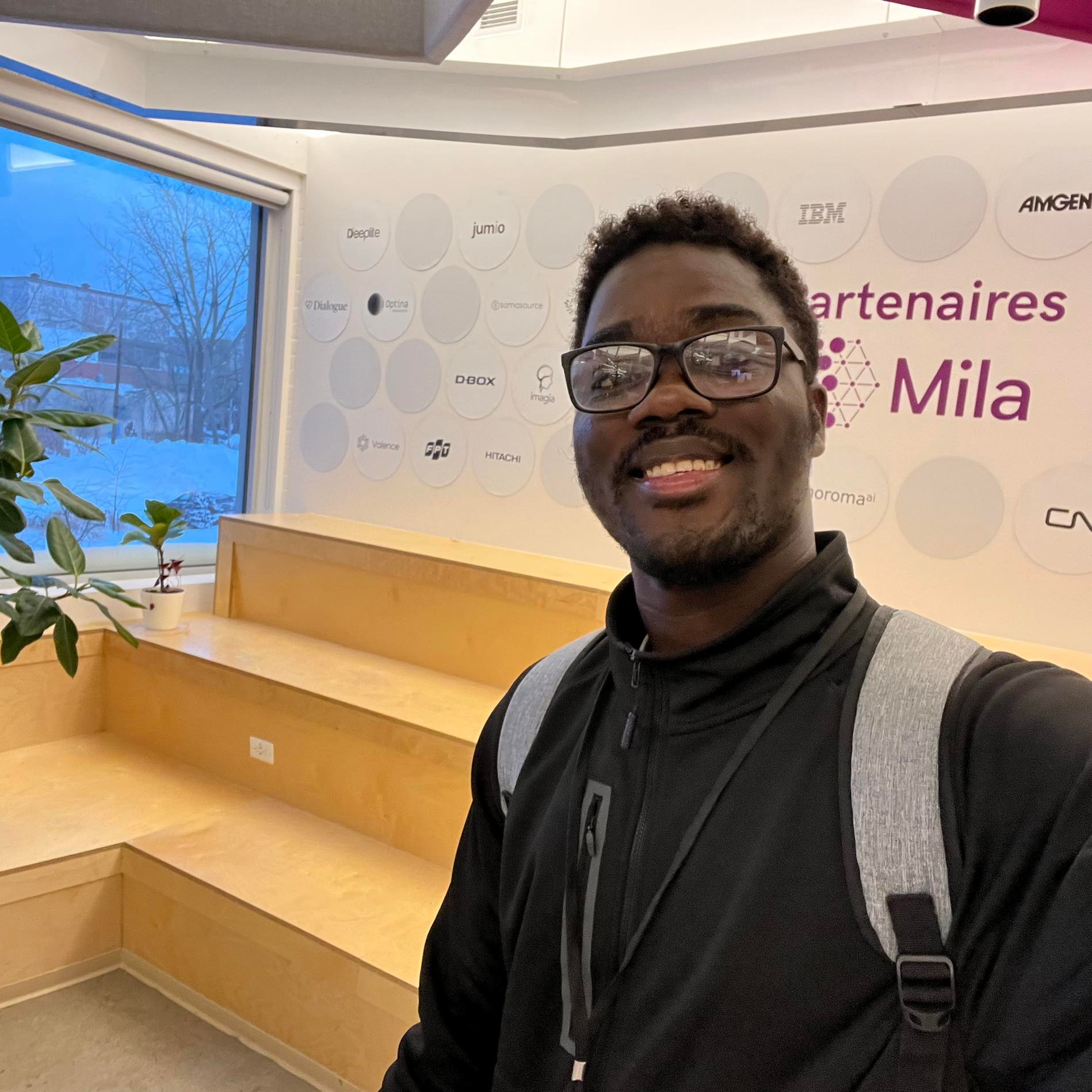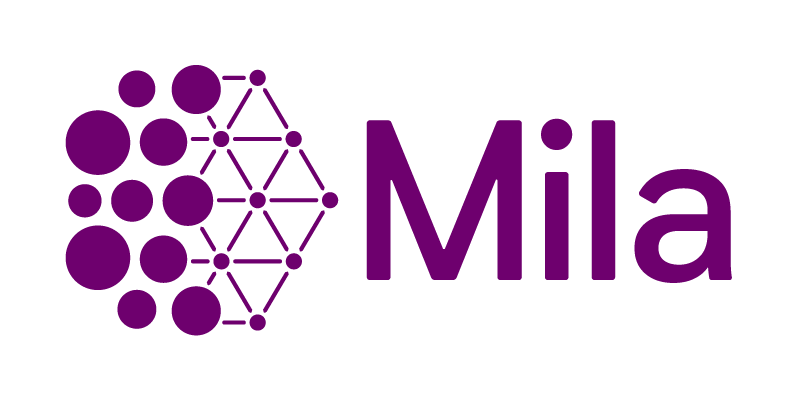About
Hey there, I am a PhD student working under the supervision of Prof. Tal Arbel in the Probabilistic Vision Group (PVG). My research interests are in Natural Language Processing for low-resourced Languages, and Machine Learning for HealthCare, especially Drug Discovery, Medical Imaging, Gene Therapy.
You can find my complete CV here.
Research Interests
- Machine Learning Techniques for Healthcare (Drug Discovery, Medical Imaging, Gene Therapy)
- NLP for low-resourced Languages (Machine Translation, Speech Recognition, Language Modeling, Multilingualism)
- Deep Learning
Education
-
Bachelor of Science in Mathematics
Kazan Federal University, Kazan, Russia
-
Master of Science in Computer Science
Jacobs University, Bremen, Germany
Experience
-
NLP Researcher
Google Research, Canada and Germany
-
Deep Learning Researcher
Mila Quebec AI Institute, Canada
-
Senior NLP Data Scientist
Roche Canada, Canada
-
Drug Discovery Research Scientist
Modelis, Canada
-
Speech Analysis and Processing Data Scientist
Speeqo, Hong Kong
Publications & Conferences
GFlowOut: Dropout with Generative Flow Networks
[Under Review at AISTATS 2023] Bayesian Inference offers principled tools to tackle many critical problems with modern neural networks such as poor calibration and generalization, and data inefficiency. However, scaling Bayesian inference to large architectures is challenging and requires restrictive approximations. Monte Carlo Dropout has been widely used as a relatively cheap way for approximate Inference and to estimate uncertainty with deep neural networks. Traditionally, the dropout mask is sampled independently from a fixed distribution. Recent works show that the dropout mask can be viewed as a latent variable, which can be inferred with variational inference. These methods face two important challenges: (a) the posterior distribution over masks can be highly multi-modal which can be difficult to approximate with standard variational inference and (b) it is not trivial to fully utilize sample-dependent information and correlation among dropout masks to improve posterior estimation. In this work, we propose GFlowOut to address these issues. GFlowOut leverages the recently proposed probabilistic framework of Generative Flow Networks (GFlowNets) to learn the posterior distribution over dropout masks. We empirically demonstrate that GFlowOut results in predictive distributions that generalize better to out-of-distribution data, and provide uncertainty estimates which lead to better performance in downstream tasks.
Biological Sequence Design with GFlowNets
[ICML 2022] Design of de novo biological sequences with desired properties, like protein and DNA sequences, often involves an active loop with several rounds of molecule ideation and expensive wet-lab evaluations. These experiments can consist of multiple stages, with increasing levels of precision and cost of evaluation, where candidates are filtered. This makes the diversity of proposed candidates a key consideration in the ideation phase. In this work, we propose an active learning algorithm leveraging epistemic uncertainty estimation and the recently proposed GFlowNets as a generator of diverse candidate solutions, with the objective to obtain a diverse batch of useful (as defined by some utility function, for example, the predicted anti-microbial activity of a peptide) and informative candidates after each round. We also propose a scheme to incorporate existing labeled datasets of candidates, in addition to a reward function, to speed up learning in GFlowNets. We present empirical results on several biological sequence design tasks, and we find that our method generates more diverse and novel batches with high scoring candidates compared to existing approaches.
Graph-Based Active Machine Learning Method for Diverse and Novel Antimicrobial Peptides Generation and Selection
[Under Rewiew at Nature Scientific Reports] As antibiotic-resistant bacterial strains are rapidly spreading worldwide, infections caused by these strains are emerging as a global crisis causing the death of millions of people every year. Antimicrobial Peptides (AMPs) are one of the candidates to tackle this problem because of their potential diversity, and ability to favorably modulate the host immune response. However, large-scale screening of new AMP candidates is expensive, time-consuming, and now affordable in developing countries, which need the treatments the most. In this work, we propose a novel active machine learning-based framework that statistically minimizes the number of wet-lab experiments needed to design new AMPs, while ensuring a high diversity and novelty of generated AMPs sequences, in multi-rounds of wet-lab AMP screening settings. Combining recurrent neural network models and a graph-based filter (GraphCC), our proposed approach delivers novel and diverse candidates and demonstrates better performances according to our defined metrics.
Self-Active Learning for Multilingual Language Models: Case Study of 23 African Languages
[EMNLP 2022] In recent years, multilingual pre-trained language models have gained prominence due to their remarkable performance on numerous downstream Natural Language Processing tasks (NLP). However, pre-training these large multilingual language models requires a lot of training data, which is not available for African Languages. Active learning is a semi-supervised learning algorithm, in which a model consistently and dynamically learns to identify the most beneficial samples to train itself on, in order to achieve better optimization and performance on downstream tasks. Furthermore, active learning effectively and practically addresses real-world data scarcity. Despite all its benefits, active learning, in the context of NLP and especially multilingual language models pretraining, has received little consideration. In this paper, we present AfroLM, a multilingual language model pretrained from scratch on 23 African languages (the largest effort to date) using our novel self-active learning framework. Pretrained on a dataset significantly (14x) smaller than existing baselines, AfroLM outperforms many multilingual pretrained language models (AfriBERTa, XLMR-base, mBERT) on various NLP downstream tasks (NER, text classification, and sentiment analysis). Additional out-of-domain sentiment analysis experiments show that \textbf{AfroLM} is able to generalize well across various domains. We release the code source, and our datasets used in our framework at this https URL.
MMTAfrica: Multilingual Machine Translation for African Languages
[EMNLP 2021] In this paper, we focus on the task of multilingual machine translation for African languages and describe our contribution in the 2021 WMT Shared Task: Large-Scale Multilingual Machine Translation. We introduce MMTAfrica, the first many-to-many multilingual translation system for six African languages: Fon (fon), Igbo (ibo), Kinyarwanda (kin), Swahili/Kiswahili (swa), Xhosa (xho), and Yoruba (yor) and two non-African languages: English (eng) and French (fra). For multilingual translation concerning African languages, we introduce a novel backtranslation and reconstruction objective, BT&REC, inspired by the random online back translation and T5 modelling framework respectively, to effectively leverage monolingual data. Additionally, we report improvements from MMTAfrica over the FLORES 101 benchmarks (spBLEU gains ranging from +0.58 in Swahili to French to +19.46 in French to Xhosa).
OkwuGbé: End-to-End Speech Recognition for Fon and Igbo
[EMNLP 2021] Language is inherent and compulsory for human communication. Whether expressed in a written or spoken way, it ensures understanding between people of the same and different regions. With the growing awareness and effort to include more low-resourced languages in NLP research, African languages have recently been a major subject of research in machine translation, and other text-based areas of NLP. However, there is still very little comparable research in speech recognition for African languages. Interestingly, some of the unique properties of African languages affecting NLP, like their diacritical and tonal complexities, have a major root in their speech, suggesting that careful speech interpretation could provide more intuition on how to deal with the linguistic complexities of African languages for text-based NLP. OkwuGbé is a step towards building speech recognition systems for African low-resourced languages. Using Fon and Igbo as our case study, we conduct a comprehensive linguistic analysis of each language and describe the creation of end-to-end, deep neural network-based speech recognition models for both languages. We present a state-of-art ASR model for Fon, as well as benchmark ASR model results for Igbo. Our linguistic analyses (for Fon and Igbo) provide valuable insights and guidance into the creation of speech recognition models for other African low-resourced languages, as well as guide future NLP research for Fon and Igbo. The Fon and Igbo models source code have been made publicly available.
2021, made with in pure Bootstrap 4, inspired by Academic Template for Hugo



